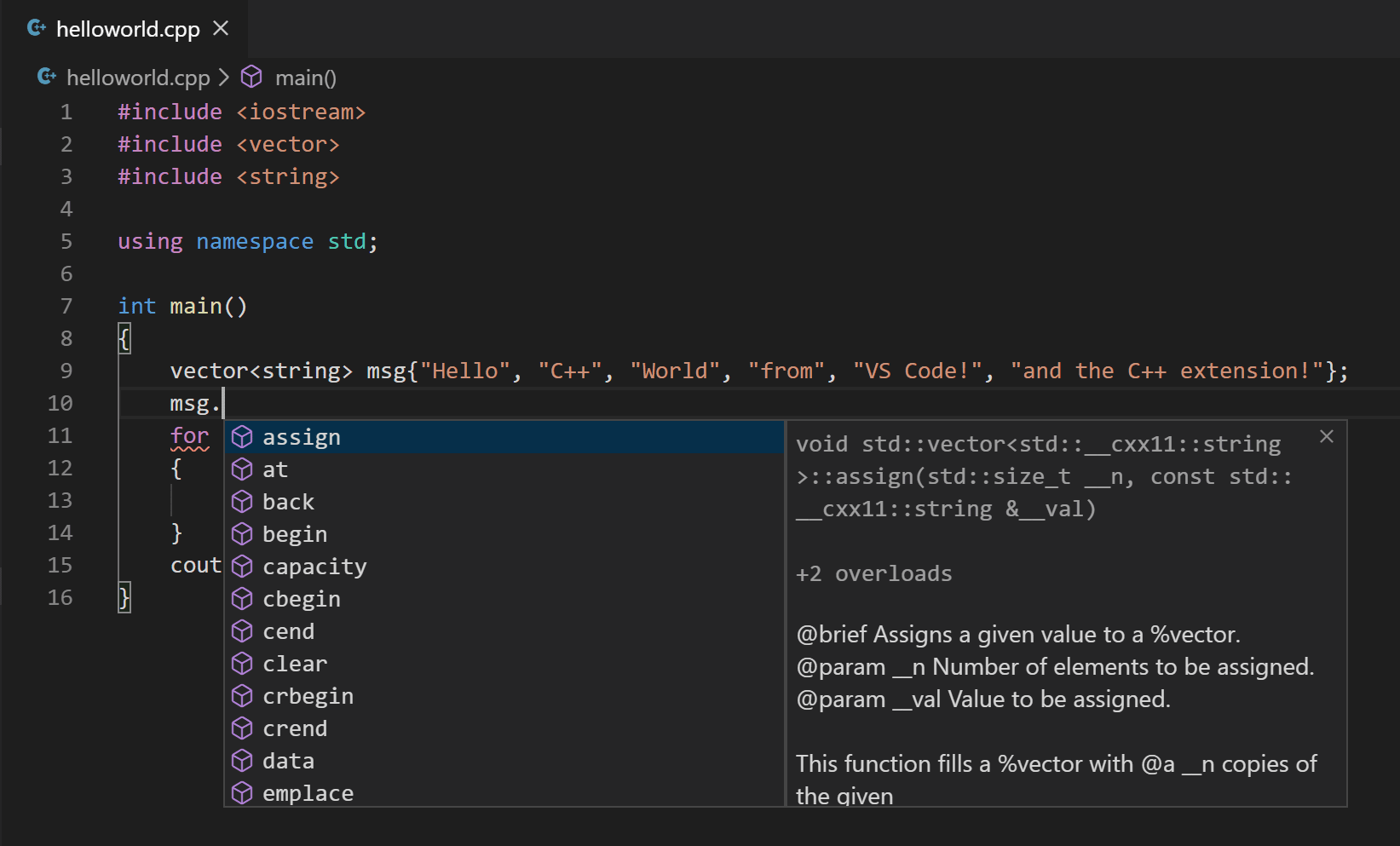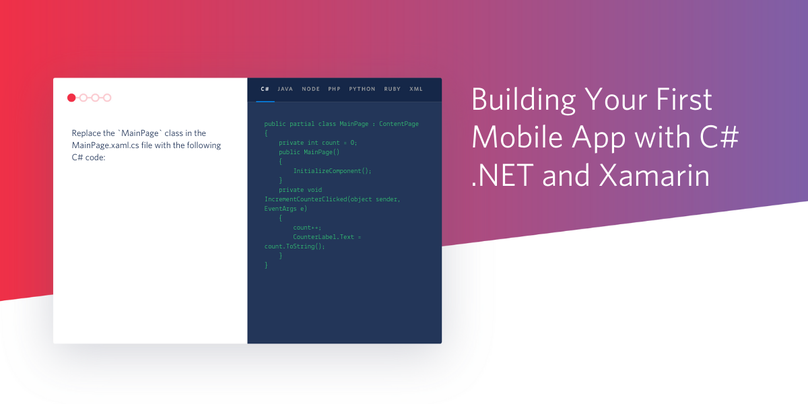
Installation
- Run C App On Macbook
- Run C App On Mac Windows 10
- Run C App On Mac Computer
- Run C App On Mac Os
- Run C++ On Mac
Mac App Store is the simplest way to find and download apps for your Mac. To download apps from the Mac App Store, you need a Mac with OS X 10.6.6 or later. In the Terminal app on your Mac, enter the complete pathname of the tool’s executable file, followed by any needed arguments, then press Return. If a command is located in one of the shell’s known folders, you can omit path information when entering the command name.
- Download Visual Studio Code for macOS.
- Open the browser's download list and locate the downloaded archive.
- Select the 'magnifying glass' icon to open the archive in Finder.
- Drag
Visual Studio Code.appto theApplicationsfolder, making it available in the macOS Launchpad. - Add VS Code to your Dock by right-clicking on the icon to bring up the context menu and choosing Options, Keep in Dock.
Launching from the command line
Run C App On Macbook
You can also run VS Code from the terminal by typing 'code' after adding it to the path:
- Launch VS Code.
- Open the Command Palette (⇧⌘P (Windows, Linux Ctrl+Shift+P)) and type 'shell command' to find the Shell Command: Install 'code' command in PATH command.
- Restart the terminal for the new
$PATHvalue to take effect. You'll be able to type 'code .' in any folder to start editing files in that folder.
Run C App On Mac Windows 10
Note: If you still have the old code alias in your .bash_profile (or equivalent) from an early VS Code version, remove it and replace it by executing the Shell Command: Install 'code' command in PATH command.
Alternative manual instructions
Instead of running the command above, you can manually add VS Code to your path, to do so run the following commands:
Start a new terminal to pick up your .bash_profile changes.
Note: The leading slash is required to prevent $PATH from expanding during the concatenation. Remove the leading slash if you want to run the export command directly in a terminal.
Note: Since zsh became the default shell in macOS Catalina, run the following commands to add VS Code to your path:
Touch Bar support
Out of the box VS Code adds actions to navigate in editor history as well as the full Debug tool bar to control the debugger on your Touch Bar:
Mojave privacy protections
After upgrading to macOS Mojave version, you may see dialogs saying 'Visual Studio Code would like to access your {calendar/contacts/photos}.' This is due to the new privacy protections in Mojave and is not specific to VS Code. The same dialogs may be displayed when running other applications as well. The dialog is shown once for each type of personal data and it is fine to choose Don't Allow since VS Code does not need access to those folders. You can read a more detailed explanation in this blog post.
Updates
VS Code ships monthly releases and supports auto-update when a new release is available. If you're prompted by VS Code, accept the newest update and it will get installed (you won't need to do anything else to get the latest bits).
Note: You can disable auto-update if you prefer to update VS Code on your own schedule.

Preferences menu
You can configure VS Code through settings, color themes, and custom keybindings and you will often see mention of the File > Preferences menu group. On a macOS, the Preferences menu group is under Code, not File.
Next steps
Once you have installed VS Code, these topics will help you learn more about VS Code:
- Additional Components - Learn how to install Git, Node.js, TypeScript, and tools like Yeoman.
- User Interface - A quick orientation around VS Code.
- User/Workspace Settings - Learn how to configure VS Code to your preferences settings.
Common questions
Why do I see 'Visual Studio Code would like access to your calendar.'
If you are running macOS Mojave version, you may see dialogs saying 'Visual Studio Code would like to access your {calendar/contacts/photos}.' This is due to the new privacy protections in Mojave discussed above. It is fine to choose Don't Allow since VS Code does not need access to those folders.
VS Code fails to update
If VS Code doesn't update once it restarts, it might be set under quarantine by macOS. Follow the steps in this issue for resolution.
Introduction to Mono on macOS

Mono supports macOS version 10.9 (Mavericks) and later.
You can use Mono on macOS to build server, console and GUI applications. Read below for the options available for GUI application development.
If you are interested in creating native GUI applications, use the MonoMac bindings and our MonoDevelop add-in. Read the description on MonoMac for more information on how to get started.
Installing Mono on macOS
You can use Mono either as a runtime to run existing application, or as an SDK to develop new applications with Mono.
Visit the download page to find the latest macOS package. Run it and follow the instructions there, you can either get a basic runtime, or a complete runtime plus a software development kit.
If you plan on developing applications with Mono, we suggest that you also install the MonoDevelop IDE after you install Mono.
The Mono package includes:
- The Mono Runtime
- GUI Toolkits: Windows.Forms and Gtk# for macOS.
- Note: the MonoMac GUI toolkit for native macOS GUI development is currently a separate download.
- SDK: C#, Visual Basic compilers, assemblers and tools
- XSP ASP.NET server
- Manual pages.
This package installs as a framework into /Library/Frameworks/Mono.framework (the same way the Java packages are installed). The executable binaries can be found in /Library/Frameworks/Mono.framework/Versions/Current/bin. If you’d like to access the mono manpages you’ll have to add /Library/Frameworks/Mono.framework/Versions/Current/man to your manpath. The macOS Mono package does not include Gtk#, XSP or mod_mono. These will have to be compiled from source.
Our packages currently require macOS 10.9 or better, for older versions, you will need to build from source code.
Using Mono on macOS
At this point, you must use Mono from the command line, the usual set of commands that are available on other ports of Mono are available.
To build applications you can use “mcs”, to run then you can use mono.
From a Terminal shell, you can try it out:
Most users would be using the MonoDevelop IDE to create their projects.
You will have a choice of GUI toolkits for building your application, from pure cross platform, to Mac-specific using MonoMac.

32 and 64 bit support
The Mono packages published on this web site provide both a 32-bit and a 64-bit Mono VM.
Starting from Mono 5.2 the mono command defaults to 64-bit, you can use the --arch=32/64 switch to control the bitness.
The 64 bit support has a few limitations today:
- Our Windows.Forms implementation uses Carbon, and as such, it would not work with a 64-bit Mono.
Building Client Applications
There are a few choices to build client applications on macOS, you should pick the technology that better fits your goals, your choices are:
| Toolkit | Runs on Linux | Runs on Windows | Runs on Mac | Binding Style | License | Status |
| MonoMac | no | no | yes | Strongly typed C# binding to Cocoa APIs | MIT X11 | Actively developed, builds on the design lessons from MonoTouch but still incomplete. This will be the new default binding for Mono on macOS. Separate download. |
| Gtk# | yes | yes | yes | Strongly typed C# binding to the cross platform Gtk+ API. Applications look foreign on macOS. | LGPL v2 | Actively developed, cross platform. Bundled with Mono. |
| Windows.Forms | yes | yes | yes | Cross platform implementation of Microsoft’s Windows.Forms. Applications look foreign on macOS. | MIT X11 | The Windows.Forms API was frozen in time by Microsoft. Bundled with Mono. |
| MonObjc | no | no | yes | Binding to the native Cocoa APIs, but requires manual use of Objective-C selectors to work with, relatively thin wrapper around the underlying APIs. | LGPL v3 | Actively developed. Separate download. |
| CocoaSharp | no | no | yes | Binding to the native Cocoa APIs, but requires manual use of Objective-C selectors to work with, relatively thin wrapper around the underlying APIs. | MIT X11 | No longer developed, no longer maintained, deprecated. Bundled with Mono. |
Running Mono applications on macOS
Run C App On Mac Computer
Running applications on macOS is very similar to linux systems, from the terminal:
For GTK# applications, it’s easiest to run them the same way but using xterm from X11.app
Windows.Forms
Run C App On Mac Os
Mono’s implementation of the System.Windows.Forms API is built on top of Carbon and can only run with Mono on 32 bit systems. The look and feel of System.Windows.Forms applications mimics the Windows style and does not currently render like a native macOS application.
Third Party Libraries
ObjC# is a transparent two way bridge that allows the CLR to access the rich underlying ObjectiveC frameworks as well as providing direct access to the CLR frameworks from the ObjectiveC language.
Uninstalling Mono on macOS
Run C++ On Mac
Run this script in a terminal:
댓글